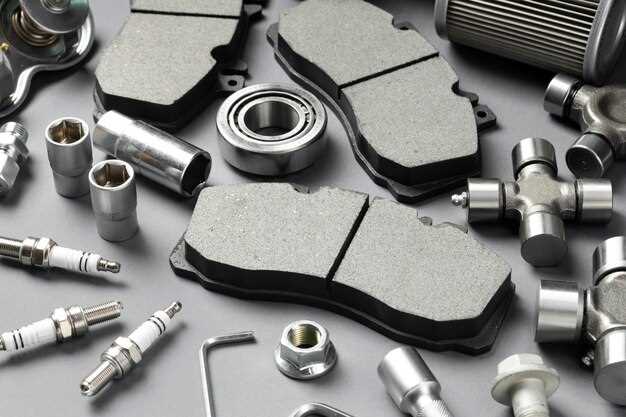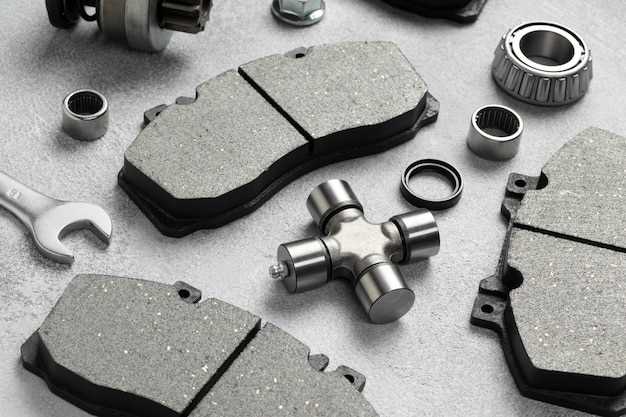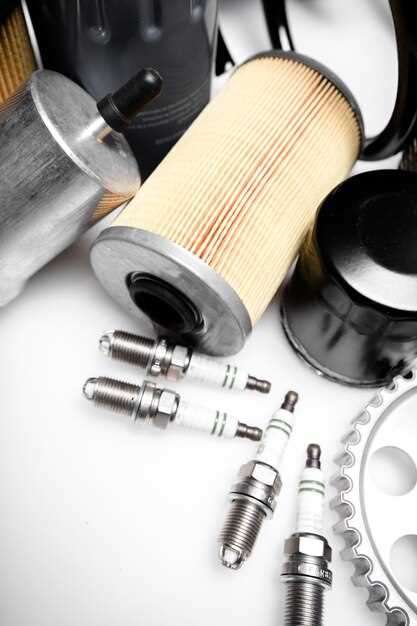
What are the most replaced auto parts?

When it comes to maintaining a car, understanding the components that often experience wear is essential for any vehicle owner. Regular usage of your vehicle leads to gradual degradation of specific parts, which can affect performance and safety. Knowing which parts are commonly replaced can save you time and money, as well as help you anticipate repairs before they become critical.
Several auto parts are notorious for their shorter lifespans due to the stress they endure during everyday driving. From the engine to the tires, these components must be monitored and replaced to ensure your car operates efficiently. This article will explore the most frequently replaced parts, the reasons behind their wear, and tips on how to keep your car in top shape.
Understanding Symptoms of Worn Out Brake Pads
Worn out brake pads can significantly affect your car’s braking performance and overall safety. Recognizing the symptoms of deteriorating brake pads is essential for timely replacement and maintaining vehicle integrity.
One of the most common signs of worn brake pads is a high-pitched squealing noise that occurs when you apply the brakes. This sound is often produced by a built-in wear indicator that signals the need for replacement. If you hear this noise, it is important to have your brake pads inspected and replaced as soon as possible to avoid further damage.
Another symptom is a grinding noise during braking. If the brake pads are excessively worn, they can wear down to the metal backing, causing this abrasive sound. This indicates that the pads need immediate replacement, as continued use can damage the rotors and lead to costly repairs.
Vibration or pulsation in the brake pedal when applying the brakes is also a warning signal. This can occur when the brake pads are unevenly worn or if the rotors are warped. Such issues can affect the car’s stopping ability and should be addressed promptly, typically through a brake pad replacement and, potentially, rotor service.
Increased stopping distance is another indicator of failing brake pads. If you notice that your car takes longer to come to a stop than usual, it may be time for a replacement. Deteriorated pads can reduce overall braking effectiveness, posing a danger on the road.
Finally, a noticeable loss of braking power can be a serious problem linked to worn brake pads. If you find that your brakes feel soft or require more pressure to engage, it is crucial to assess the condition of your brake system. Early detection and management can prevent brake failure and ensure safe driving.
Identifying Signs of a Failing Battery

A vehicle’s battery plays a crucial role in its overall performance, and recognizing the signs of a failing battery can help prevent unexpected breakdowns. Here are some common indicators that your battery may need replacement due to wear.
1. Slow Engine Crank: When you turn the key in the ignition and notice that the engine takes longer to start, this can be a clear sign of battery wear. A weak battery struggles to provide the necessary power to crank the engine efficiently.
2. Electrical Issues: If you experience problems with your car’s electronics–such as dimming lights, malfunctioning power windows, or issues with the radio–this may indicate that the battery is unable to deliver consistent power, signaling a potential need for replacement.
3. Corroded Terminals: Examine the battery terminals for any signs of corrosion. A build-up of white, ashy substance around the terminals can interfere with the battery’s performance, and persistent corrosion can lead to an eventual battery failure.
4. Warning Light: Modern vehicles are equipped with dashboards that often include a battery warning light. If this light illuminates while driving, it is an urgent sign that the battery or charging system is experiencing issues that warrant attention.
5. Bad Smell: A failing battery can sometimes leak gas, producing a distinct rotten egg odor (sulfur smell). If you detect this smell near the battery, it is crucial to have it inspected or replaced immediately, as it can indicate a serious problem.
6. Old Battery Age: Batteries typically last between three to five years. If your battery is approaching or has exceeded this age, it may be time to consider a replacement before signs of failure become apparent.
Being aware of these signs can save you from being stranded and ensure that your vehicle remains reliable. Regular maintenance and inspection of the battery will help prolong its lifespan and prevent unexpected wear.
When to Replace Worn Tires for Safety

Worn tires can significantly impact the safety and performance of your car. It is crucial to monitor tire wear regularly to ensure optimal traction and handling. A common method to assess tire wear is the penny test; insert a penny into the tread grooves with Lincoln’s head facing down. If you can see the top of his head, it’s time to replace your tires.
Another important indicator of tire wear is the tread wear indicators, which are small bars of rubber located in the grooves of the tire. When these indicators become level with the surrounding tread, it shows that your tires have worn down and need replacement.
Weather conditions and driving habits also influence tire wear. Regularly inspect your tires for any signs of uneven wear, bulges, or cracks, as these can indicate potential issues that may compromise your safety. Additionally, vibrations or noises while driving might suggest that your tires are worn and inadequate for safe operation.
In general, it is advisable to replace tires when tread depth reaches 2/32 of an inch or less. Driving on worn tires increases the risk of hydroplaning, reduces braking efficiency, and can lead to tire blowouts. Prioritizing tire maintenance helps ensure your car operates safely on the road.